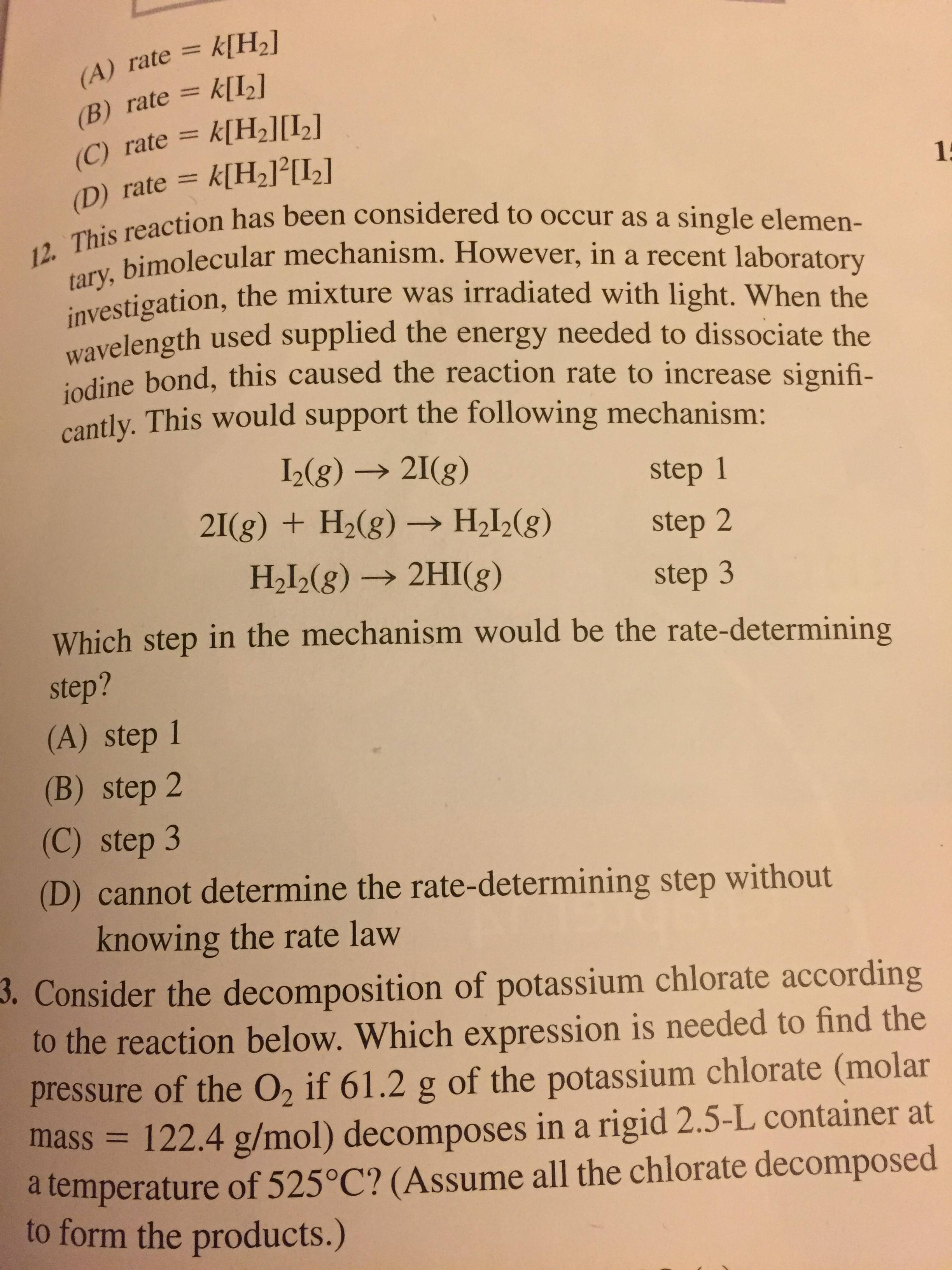Which step would be the rate-determining step?

The entire reaction is
#H_2 + I_2 -> 2HI#
and the rate law is #"rate" = k[H_2][I_2]# . The overall order for this 2, but none of these steps have a molecularity of 2.
I'd appreciate some help!

The entire reaction is
and the rate law is
I'd appreciate some help!
1 Answer
Well, the first step generates
I would say that the second step is slow, but that it is due to not enough
But let's suppose it was just the second step, because it contains
#r(t) = k_2[I]^2[H_2]#
However,
#"I"_2(g) stackrel(k_1" ")(rightleftharpoons) 2"I"(g)#
#""^(" "" "" "k_(-1))#
#2"I"(g) + "H"_2(g) stackrel(k_2" ")(->) "H"_2"I"_2(g)#
#"H"_2"I"_2(g) stackrel(k_3" ")(->) 2"HI"(g)#
Then if we assume the fast equilibrium approximation, we get the equilibrium expression to be:
#r_1(t) = k_1[I_2] = r_(-1)(t) = k_(-1)[I]^2#
#=> K -= k_1/(k_(-1)) = ([I]^2)/([I_2])#
As a result,
#[I]^2 = k_1/(k_(-1))[I_2]#
And this gives:
#color(blue)(r(t) = (k_2k_1)/(k_(-1))[I_2][H_2])#
And this agrees with the proposed rate law, where

